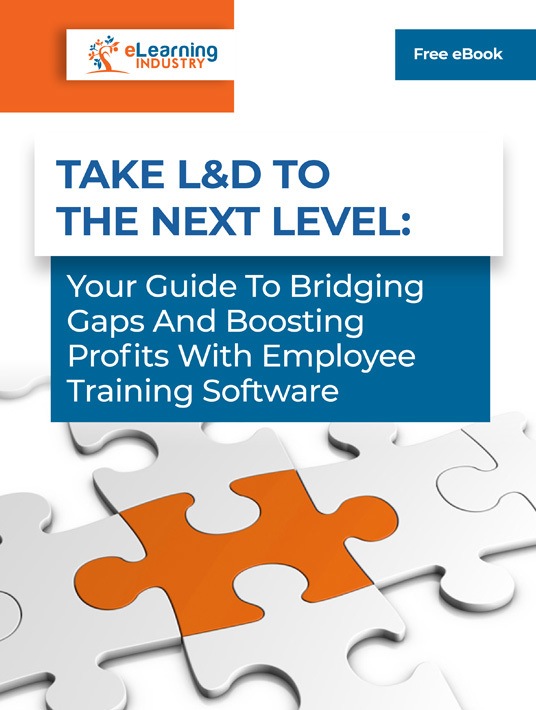Training Needs Analysis: How To Conduct It To Successfully Select Your Employee Training Software
There are certain types of online training that are pretty much standard. If you buy a new piece of employee training software or equipment, your team has to learn how to use it. If your government or regulatory body issues new terms, you’re required to comply. If a new member joins your team, or if someone moves to a new department, they must be on-boarded. Other modes of online training aren’t quite as obvious, so it helps to explore them. You can use questionnaires, surveys, in-person interviews, appraisals, and customer feedback to conduct successful training needs analysis.

1. Review Company Practices
First, take an overall look at your firm. How are you doing? What’s your turnover rate, and how are profits looking? Do your employees and customers seem happy? Is the company struggling or thriving? This kind of review can be painful because you might not like what you see. If possible, get an objective party to do the training needs analysis. Professional performance audits can be pricey and invasive, so make a barter deal instead. Look for a group of peers that you trust and create an informal audit board. The board can then review everyone else’s company. Some of you should be from the same industry, for context. Others should be unconnected to your sector, to enhance objectivity. Getting outside eyes will help you see how your company looks to customers and strangers. Someone in your line of work can point out specific flaws. An outsider can give you an unbiased human perspective. Be sure to give each other complete quid pro quo. Have them thoroughly inspect your business, and inspect theirs in return.
2. Go Task By Task
Evaluating an entire company is a complex task and can be quite overwhelming, so you need a strategy. You could start by dividing your training needs analysis into bits. For example, you can review one department at a time or focus on tasks. You could start by checking the books or the staff attendance record. You could look at the suggestion box, or talk to key personnel. In financial audits, management is interviewed first. This is more of a social and cultural audit, so you should start with the subordinate staff. They often have the clearest read on the company because they deal with everyone. People see them as non-threatening and sometimes overlook them altogether. It puts them in a unique position to gather information. You can find out what your staff and customers really think. Remember to approach this as a fact-finding mission rather than a witch hunt. The latter will make your ‘informants’ clam up.
3. Explore Individual Needs
Once you have an overall picture, talk to the rest of your people. Be sincere in your approach. Find out what areas they feel are lacking in their careers. Staff appraisals are a good time to do this. Appraisals shouldn’t just be about telling them what they’re doing wrong. It’s a good time to find out what you as an employer are doing wrong.
The advantage of finding out the type of training or the correct employee training software your team needs is clear. If you teach them skills they’re actually interested in, they’ll put in more effort. This increases your online training ROI and makes the whole process more efficient. You could also ask your team to review their peers, suggesting areas where their colleagues may have a shortfall. Employees may not be sure what you’re asking them. They’ll be anxious to say what they think you want to hear. Make it easier for them by using clear questions. Ask them what areas they’re struggling with, or give them categories to pick from. Common online training modules include networking, technology, presentation skills, and professional certification.
4. Think About The Long Term
As you conduct your training needs analysis and explore these needs, think about the vision of the company. Where do you see yourself in five years, and how sustainable is your employee training software? How much can you afford to spend, and what’s the best option within your budget? Online training is a good solution both budget-wise and time-wise. It’s easily expandable as your team grows and can be tailored as your firm evolves. It’s suitable in terms of time and convenience and can be customized for individual employee needs. It’s easily measurable and offers data that can be used in other organizational contexts.
5. Use Current LMS Data
One of the best ways to identify gaps in your current online training strategy or LMS is to learn from past mistakes. What aspects of your existing LMS have a negative impact on your online training ROI? Do your employees actually enjoy the online training experience or are there areas for improvement? LMS reports can help you determine the root cause of your online training issues and figure out how to move forward, as well as create a list of must-haves for your new LMS platform based on your current system’s shortcomings.
The question when conducting a training needs analysis isn’t whether or not you’re going to train your team. The question is what kind of training you’re going to offer. Assess your company to see what your requirements are. The evaluation should be done by an objective third party. Look into individual tasks and departments, then ask your employees what they need on a one-on-one basis. Talk to your finance team to see how much cash is available for training. Online training is the best option all round, so use the gathered data to identify and purchase the right online training course.
Download our eBook Take L&D To The Next Level: Your Guide To Bridging Gaps and Boosting Profits With Employee Training Software to learn how new employee training software can improve your L&D strategy and staff satisfaction. You’ll also get tips to improve profit margins and workplace productivity with your new LMS platform, as well as the most notable advantages that employee training software offers small and medium-sized businesses.








